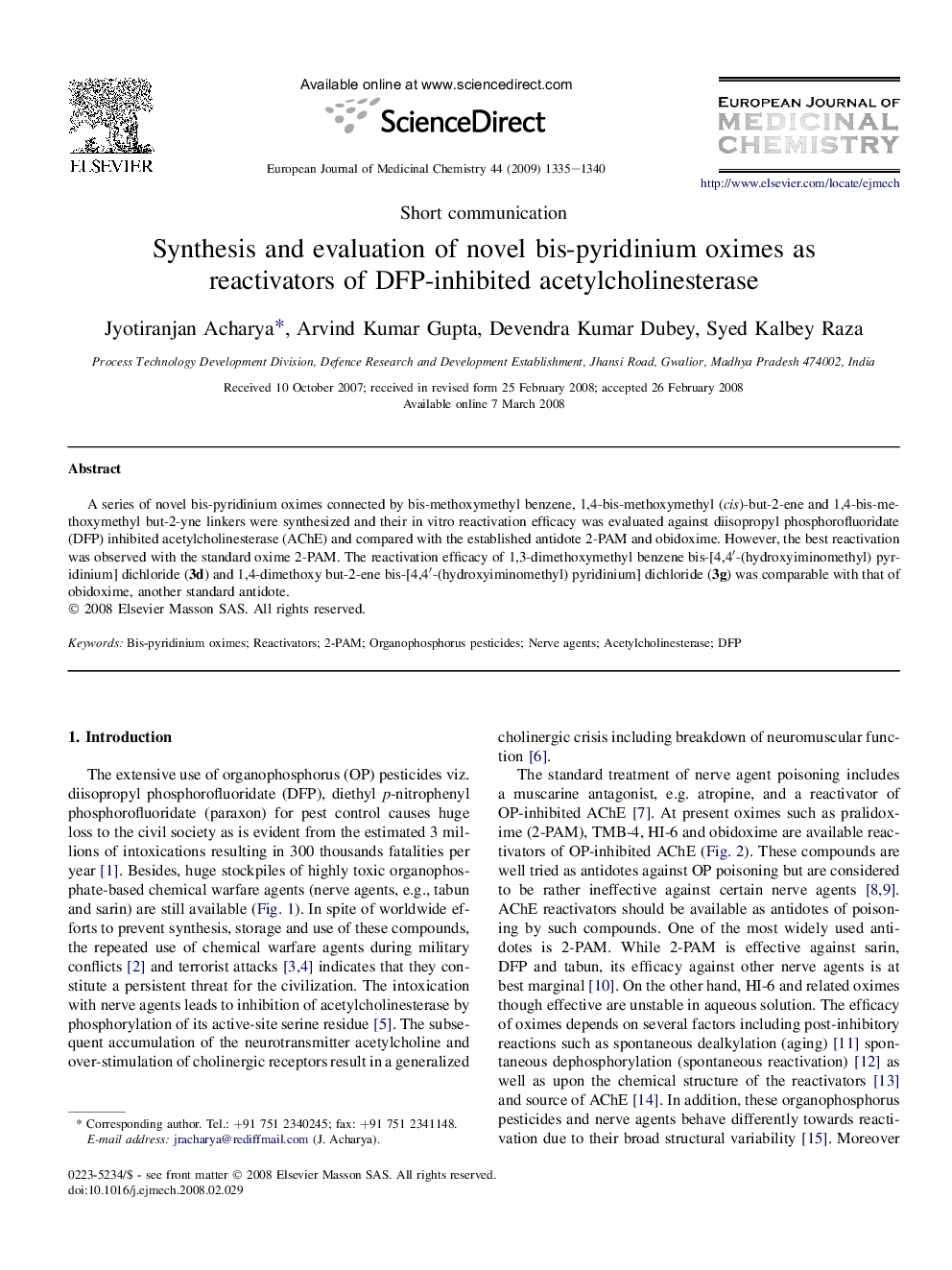| Article ID | Journal | Published Year | Pages | File Type |
|---|---|---|---|---|
| 1393345 | European Journal of Medicinal Chemistry | 2009 | 6 Pages |
A series of novel bis-pyridinium oximes connected by bis-methoxymethyl benzene, 1,4-bis-methoxymethyl (cis)-but-2-ene and 1,4-bis-methoxymethyl but-2-yne linkers were synthesized and their in vitro reactivation efficacy was evaluated against diisopropyl phosphorofluoridate (DFP) inhibited acetylcholinesterase (AChE) and compared with the established antidote 2-PAM and obidoxime. However, the best reactivation was observed with the standard oxime 2-PAM. The reactivation efficacy of 1,3-dimethoxymethyl benzene bis-[4,4′-(hydroxyiminomethyl) pyridinium] dichloride (3d) and 1,4-dimethoxy but-2-ene bis-[4,4′-(hydroxyiminomethyl) pyridinium] dichloride (3g) was comparable with that of obidoxime, another standard antidote.
Graphical abstractA series of novel bis-pyridinium oximes connected by bis-methoxymethyl benzene, 1,4-bis-methoxymethyl (cis)-but-2-ene and 1,4-bis-methoxymethyl but-2-yne linkers were synthesized and their in vitro reactivation efficacy was evaluated against DFP-inhibited acetylcholinesterase (AChE) and compared with the established antidote 2-PAM and obidoxime. The reactivation efficacy of some new oximes was comparable with that of obidoxime.Figure optionsDownload full-size imageDownload as PowerPoint slide
